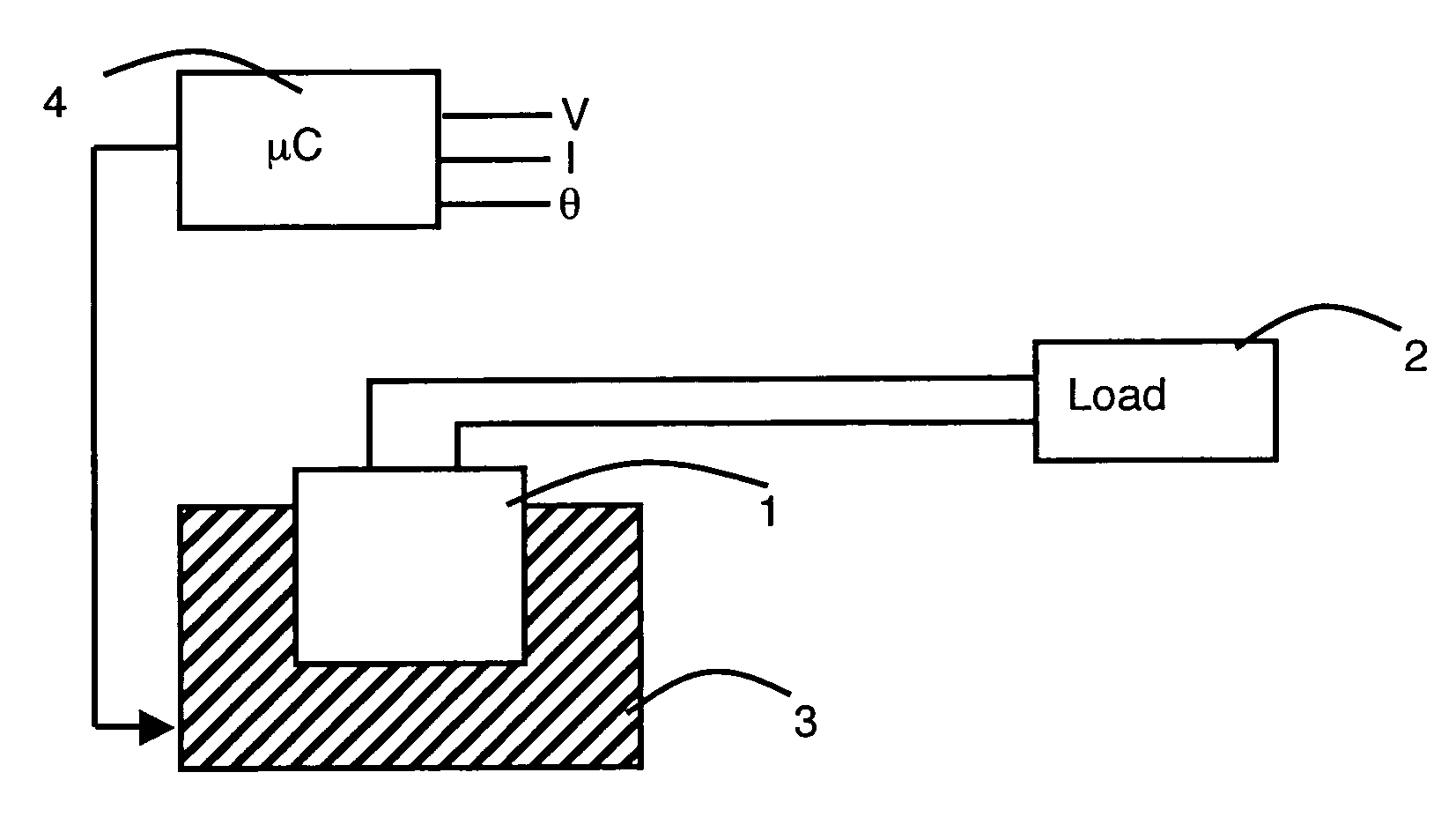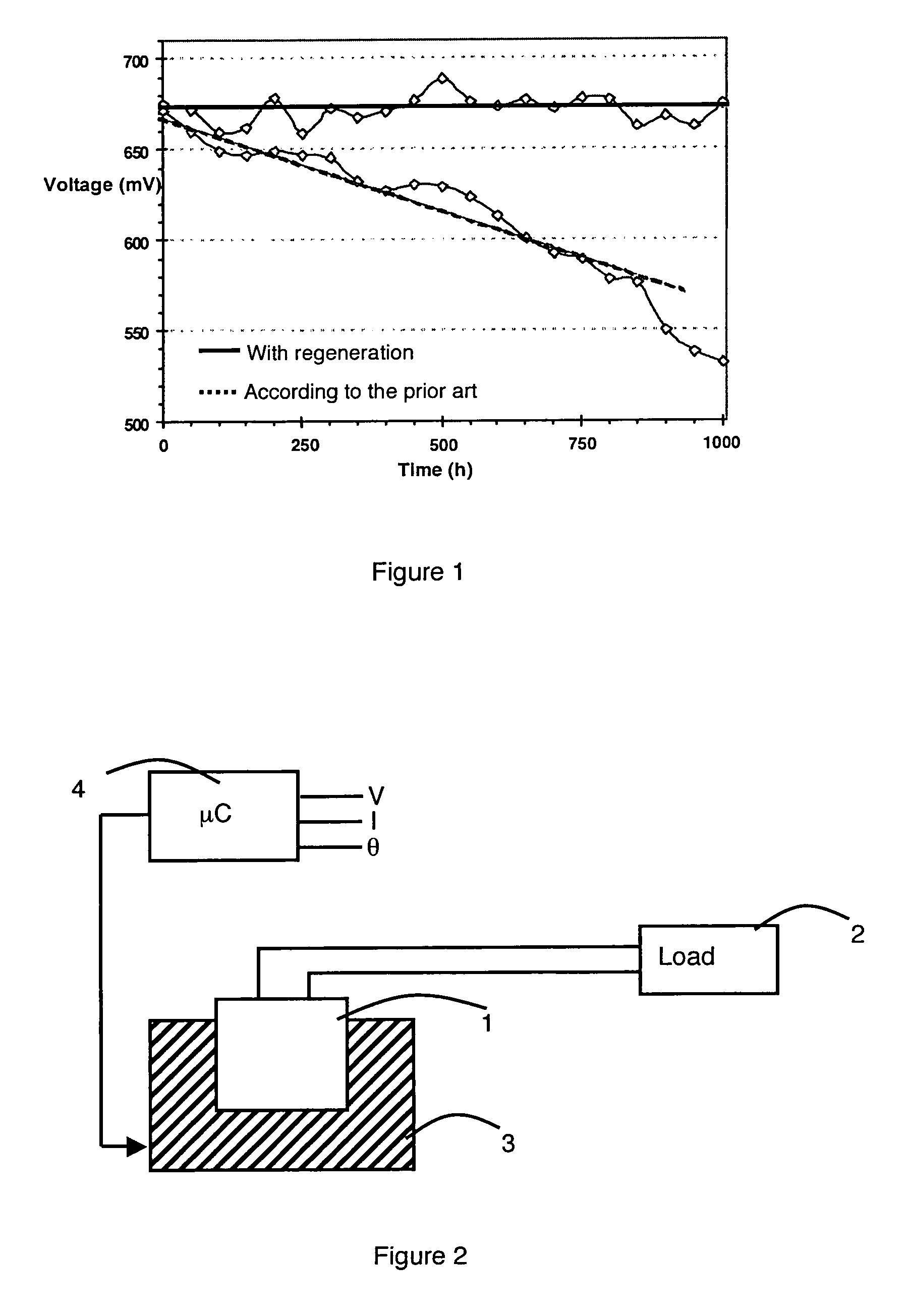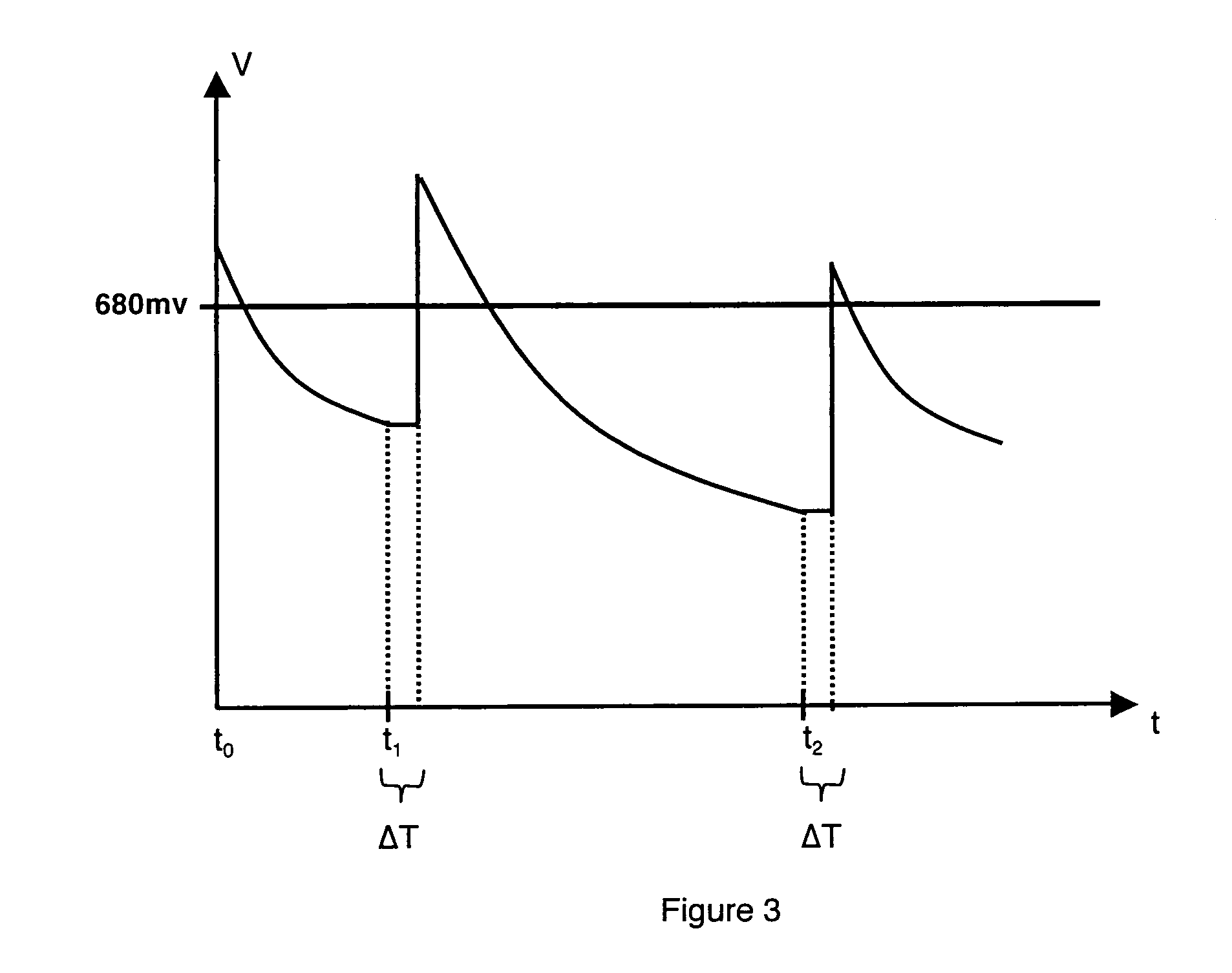Method for using a fuel cell comprising a regeneration step by lowering the temperature
a technology of fuel cell and regeneration step, which is applied in the direction of fuel cell, fuel cell auxiliary, fuel cell heat exchange, etc., can solve the problems of slow and constant decrease of fuel cell performance, poor control of water management, and low efficiency of fuel cell, and achieves high performance and easy implementation
- Summary
- Abstract
- Description
- Claims
- Application Information
AI Technical Summary
Benefits of technology
Problems solved by technology
Method used
Image
Examples
Embodiment Construction
[0016]For the fuel cell to keep optimal performances, at least one regeneration step is scheduled during use of the fuel cell 1. This regeneration step consists in temporarily lowering the temperature of fuel cell 1 below the nominal operating temperature. This regeneration step is performed without modifying the other operating parameters of the cell (nominal operating temperature, current density, flow rate, pressure, humidification of the reactive gases . . . ). Furthermore, the use of the fuel cell is not interrupted and supply of power by the cell to an electric load 2 (in FIG. 2) is maintained during the regeneration step. Once the regeneration step has been completed, the temperature of the fuel cell is brought back to its nominal value. For example, as illustrated in FIG. 2, a control circuit 4 is connected to a cooling system 3 of the cell.
[0017]For example, FIG. 3 illustrates the influence on the cell voltage of a regeneration step by temporary cooling of the cell, for exa...
PUM
 Login to View More
Login to View More Abstract
Description
Claims
Application Information
 Login to View More
Login to View More - R&D
- Intellectual Property
- Life Sciences
- Materials
- Tech Scout
- Unparalleled Data Quality
- Higher Quality Content
- 60% Fewer Hallucinations
Browse by: Latest US Patents, China's latest patents, Technical Efficacy Thesaurus, Application Domain, Technology Topic, Popular Technical Reports.
© 2025 PatSnap. All rights reserved.Legal|Privacy policy|Modern Slavery Act Transparency Statement|Sitemap|About US| Contact US: help@patsnap.com



